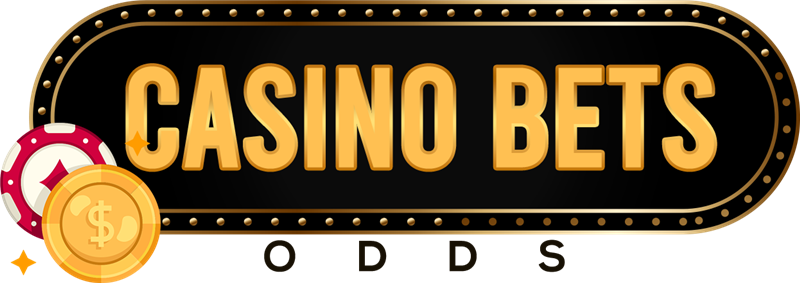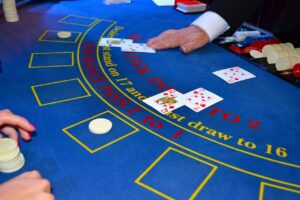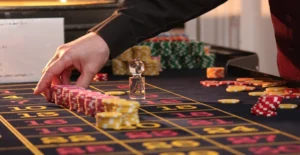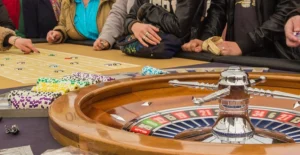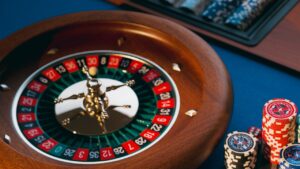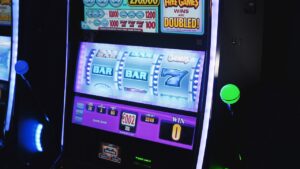I’ve always been fascinated by the idea of a small bet leading to a significant payout. It’s the stuff of dreams, right? Like hitting a lottery, but with a bit more strategy involved. This weekend, I decided to explore what it takes to turn a modest $10 stake into a substantial win, specifically looking at the allure of $10 at 800 to 1 odds. It sounds almost unbelievable, but understanding the mechanics behind such odds can be quite illuminating.
Key Takeaways
- Understanding “800-to-1 odds” means that for every $1 you bet, you stand to win $800, with your original $10 stake returned, totaling $8,000.
- Odds can be presented in American, Decimal, or Fractional formats; 800-to-1 is equivalent to +80000 in American odds and 801.0 in Decimal odds.
- A bet with $10 at 800-to-1 odds implies a very low probability of winning, but offers a high potential reward, turning $10 into $8,000.
- Such long odds are typically found in niche markets like ‘pick’em’ scenarios or novelty bets, where outcomes are highly uncertain.
- While exciting, placing bets at such long odds should be approached with a responsible mindset, focusing on risk management rather than as a consistent strategy.
What Does “800-to-1 Odds” Actually Mean?
When I first saw “800-to-1 odds,” my mind immediately went to the potential payout. It sounds like a lot, right? But what does it signify in the world of betting? Essentially, these odds tell us about the likelihood of a specific event happening. If an event has odds of 800-to-1, it means that for every $1 you bet, you stand to win $800 if your prediction is correct. So, if I were to place a $10 bet at these odds, and my chosen outcome actually occurred, I would win $8,000. That’s a significant return on a small wager.
It’s important to understand how these odds translate into probability. While 800-to-1 sounds like a very small chance of winning, using a tool like a betting odds calculator can help put it into perspective. These calculators can convert odds into implied probability, giving you a clearer picture of the chances involved.
Here’s a simple breakdown:
- The Ratio: The “800-to-1” format is a way of expressing the relationship between the potential winnings and the stake. The first number (800) represents the profit, and the second number (1) represents the amount wagered.
- The Payout: For a $10 bet, the winnings would be calculated as ($10 * 800) / 1 = $8,000.
- The Total Return: This $8,000 is your profit. Your total return would be your original $10 stake plus the $8,000 winnings, totaling $8,010.
Understanding these odds is the first step in appreciating the risk and reward involved. It’s not just about the big potential payout; it’s about grasping the low probability that usually accompanies such long odds.
Odds Formats & Implied Probability: Fractional, Decimal, American
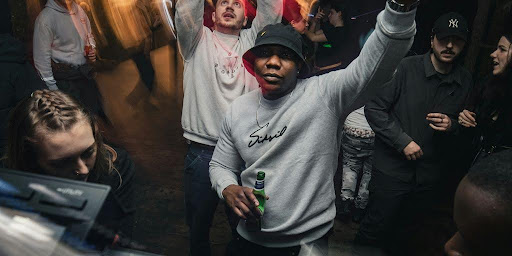
When I first started looking into betting, I was a bit confused by all the different ways odds were presented. It turns out, whether you see them as fractions, decimals, or those plus and minus numbers, they all boil down to the same thing: the chance of something happening. It’s like different languages for the same idea.
Understanding these formats is key to figuring out what you could win and what the chances are.
Let’s break them down:
- Fractional Odds: These are common, especially in places like the UK. You’ll see them written like 5/1. This means for every $1 you bet, you’d get $5 back in winnings if your bet wins. So, if I bet $10 at 800/1, I’d win $8,000.
- Decimal Odds: These are used a lot in Europe and Canada. They show the total amount you’ll get back for every $1 bet, including your original stake. So, 800/1 odds in fractional would be 801.00 in decimal (because you get your $1 back plus $800 profit). If I bet $10 at 801.00, I’d get $8,010 back in total.
- American Odds: These are what you’ll see most often in the US. They use plus (+) and minus (-) signs. A positive number, like +800, means you win that amount for every $100 you bet. So, +800 means you win $800 on a $100 bet. A negative number, like -150, means you have to bet that amount to win $100. For our 800-to-1 example, it would be +800 in American odds.
Here’s a quick look at how they relate:
| Fractional | Decimal | American | Implied Probability (approx.) |
| 1/1 | 2.00 | +100 |
50% |
| 2/1 | 3.00 | +200 |
33.3% |
| 5/1 | 6.00 | +500 |
16.7% |
| 800/1 | 801.00 | +800 |
1.23% |
Knowing how to convert between these is helpful, especially if you’re comparing odds from different places. You can use a betting odds calculator to make this easy.
The implied probability is basically the chance of an event happening, as shown by the odds. It’s calculated differently for each format, but they all give you an idea of how likely the bookmaker thinks the outcome is. Higher odds mean a lower chance, and lower odds mean a higher chance.
It’s not just about knowing the numbers, though. It’s about understanding what those numbers mean for your potential winnings and the actual likelihood of the event occurring. This helps you make more informed decisions about where to place your bets.
The Math Behind the Bet: Risk vs. Reward
When I look at odds like 800-to-1, my first thought isn’t just about the potential payout, but about the sheer unlikelihood of it actually happening. It’s a bit like buying a lottery ticket – you know the chances are slim, but the dream of a massive win keeps you buying.
Let’s break down what that 800-to-1 means for my $10 bet. If I put down $10 and the odds are 800-to-1, it means for every $1 I wager, I stand to win $800. So, my $10 bet, if it hits, would pay out $8,000 ($10 x 800). That’s the reward part. Simple enough, right?
But then there’s the risk. The “1” in 800-to-1 tells me how much I have to bet to win the “800”. In this case, I bet $10 to win $8,000. The total return, including my original stake, would be $8,010. The risk is the $10 I put down. It’s a small amount, which makes it feel less risky, but the probability of losing that $10 is incredibly high.
To get a clearer picture, I can think about implied probability. For fractional odds like 800-to-1, the calculation is straightforward: 1 / (Odds + 1). So, for 800-to-1, the implied probability is 1 / (800 + 1), which equals 1 / 801. As a percentage, that’s about 0.125%. That’s a tiny chance.
Here’s a quick look at how the numbers stack up:
| Bet Amount | Odds | Potential Winnings | Total Payout | Implied Probability |
| $10 | 800-to-1 |
$8,000 |
$8,010 | ~0.125% |
It’s important to remember that these odds are set by bookmakers based on a lot of data and analysis. They’re trying to predict outcomes, but they also set odds to balance their books and make a profit. My job, if I want to be smart about this, is to see if I think their assessment of the probability is off, or if there’s a specific reason I believe this long shot might actually come in.
The core of any bet, especially a long shot, is weighing what you could win against what you’re likely to lose. With 800-to-1 odds, the potential win is huge, but the likelihood of that win is minuscule. It’s a gamble, plain and simple, and understanding those numbers is key to knowing what you’re getting into.
Where You’d Find 800-1 Odds: Pick’em Markets & Novelty Bets
Finding odds that are as long as 800-to-1 isn’t something you’ll stumble upon every day, especially in the more common betting markets. You’re not going to see those kinds of numbers on a standard NFL or NBA game, for instance. Those types of events usually have much tighter odds because the outcomes are more predictable, or at least, the sportsbooks have a lot of data to work with.
So, where do these long shots typically show up? Often, you’ll find them in what are called “pick’em” markets or in “novelty” bets. Pick’em markets can sometimes refer to situations where two competitors are so evenly matched that there’s no clear favorite, but more often in the context of long odds, it refers to markets where you’re picking a winner from a very large field.
Think about things like:
- Major Golf Tournaments: Picking the winner of The Masters or the U.S. Open from a field of 150+ golfers. Many players will have very long odds.
- Horse Racing: Especially in larger races with many horses, like the Kentucky Derby. You might find a horse with 100-to-1 odds, and occasionally even longer.
- Awards Season: Betting on who wins an Oscar for Best Picture or Best Actor. While the favorites might have reasonable odds, some of the more obscure nominees can be priced way out there.
- Political Elections: Predicting the winner of a presidential election in a country with many candidates, or perhaps a specific outcome within a larger election, can sometimes yield very long odds.
Novelty bets are even more varied. These are bets on events that aren’t traditional sports or specific outcomes within a sport that are less common. For example, betting on the winner of a reality TV show competition, or perhaps a specific statistical outcome in a game that’s highly unlikely.
The key characteristic of markets where you’ll find 800-to-1 odds is a high degree of uncertainty or a very large number of possible outcomes. The bookmaker is essentially pricing in a very low probability for that specific result to occur. It’s important to remember that these odds reflect the bookmaker’s assessment of likelihood, not necessarily a guarantee of what will happen.
Possible Scenarios: Turning $10 into $8,000—And When That Happens
So, you’ve got a $10 bet and odds of 800-to-1. What does that actually mean for your wallet if things go your way? Well, it’s straightforward math. If your bet wins, that $10 stake, multiplied by those massive 800-to-1 odds, means you’re looking at a potential payout of $8,000. That’s $7,990 in profit, plus your original $10 back. It’s the kind of win that makes you sit up and take notice, turning a small, almost casual wager into a significant chunk of change.
But when do odds like that actually show up? You’re not typically going to find 800-to-1 odds on a heavy favorite in a major sporting event. Instead, you’ll usually see them in markets where there’s a lot of uncertainty or for outcomes that are considered highly unlikely. Think about novelty bets, like predicting the exact score of a championship game or a specific player to achieve a very rare statistical feat. Sometimes, in very niche sports or less popular leagues, you might find individual outcomes with odds that high, but it’s less common.
Here are a few examples of where such odds might pop up:
- A long-shot horse in a major race: While most horses might be in the single or double digits for odds, a true outsider, perhaps one with a poor recent record or an unusual breeding, could be priced at 800-to-1.
- An underdog in a playoff series: In a best-of-seven series, if a team is considered a massive underdog to even win a single game, let alone the series, their odds to win the entire series could reach astronomical levels.
- A specific, unlikely event in a football match: Betting on a player to score a hat-trick, a specific player to be sent off, and the match to end 5-4 in favor of the away team could combine to create odds in that range, especially if you’re using a parlay or accumulator bet.
It’s important to remember that these odds reflect a very low probability of success. The bookmaker sets these odds because, statistically, the chances of that specific outcome happening are slim. While the dream of turning $10 into $8,000 is exciting, it’s crucial to approach such bets with the understanding that they are long shots. It’s more about the thrill of a potential massive payout than a reliable strategy for consistent wins.
Psychology & the Favourite-Longshot Bias

It’s interesting how our minds work when it comes to betting, especially with those long-shot odds. We see “800-to-1” and our brains immediately jump to the massive payout, the life-changing money. It’s like a lottery ticket, right? That allure of a huge win from a small stake is incredibly powerful. This is often called the “longshot bias” – we tend to overvalue unlikely events simply because the potential reward is so high.
Think about it. When I look at a bet with odds like that, I’m not just seeing the numbers; I’m picturing myself cashing in. It’s a fantasy, a dream scenario. This psychological pull can make us overlook the sheer improbability of the outcome. We might focus on that one tiny chance of success and ignore the overwhelming statistical likelihood of losing.
Here’s a quick look at how our perception can get skewed:
- The “What If” Factor: We imagine the one scenario where the underdog pulls off a miracle.
- Emotional Investment: We might pick a team or player we like, even if their odds are terrible.
- Availability Heuristic: We remember the rare stories of massive upsets more vividly than the countless times favorites win.
It’s a bit like playing Zoom Roulette. You might bet on a single number, knowing the odds are stacked against you, but the idea of hitting that big payout is just too tempting. The thrill of the possibility can be more appealing than the certainty of a smaller, more likely win.
The human brain is wired to pay attention to rare, high-impact events. This can lead us to overestimate the probability of long shots paying off, especially when the potential reward is substantial. It’s a fascinating quirk of our psychology that plays a big role in why people are drawn to bets with extreme odds.
Understanding this bias is key. It helps me recognize that while the dream of turning $10 into $8,000 is exciting, it’s important to temper that excitement with a realistic assessment of the actual chances. It’s not about crushing the dream, but about being aware of the mental traps we can fall into when faced with such tempting odds. It’s a good reminder to check out resources on betting odds calculators to get a clearer picture of what those odds truly represent.
Is It a “Strategy”? Risk Management and the Kelly Criterion
When I look at odds like 800-to-1, it’s easy to get caught up in the dream of a massive payout from a small bet. But is this a strategy, or just wishful thinking? For serious bettors, managing risk is key, and that’s where concepts like the Kelly Criterion come into play. It’s a mathematical approach to determine how much of your bankroll you should bet on any given opportunity to maximize long-term growth.
Think of it this way: the Kelly Criterion helps you figure out the optimal bet size. It takes into account the odds of the bet and your perceived edge, or how confident you are that the outcome will happen. The formula itself can be a bit much, so many people use a Kelly betting calculator to do the heavy lifting. This tool helps convert odds and figure out the ideal stake.
Here’s a simplified look at what goes into it:
- Your perceived edge: How likely do you think the event is to happen, expressed as a percentage?
- The odds offered: What are the bookmaker’s odds for that event?
- Your bankroll: The total amount of money you have set aside for betting.
The Kelly Criterion suggests that you should only bet a fraction of your bankroll, especially on long-shot bets where your edge is uncertain. Betting too much on a single long shot, even at 800-to-1, can wipe out your entire bankroll if it doesn’t hit. Conversely, betting too little means you miss out on potential gains.
While the allure of an 800-to-1 payout is strong, applying a disciplined approach like the Kelly Criterion is what separates casual bettors from those looking for consistent, long-term results. It’s about making calculated decisions, not just chasing a lottery-like win.
It’s important to remember that the Kelly Criterion is best suited for situations where you have a genuine edge, like in certain sports betting markets. For novelty bets or events where your edge is purely speculative, applying the full Kelly might not be appropriate. In those cases, a fractional Kelly approach, or even just a small, fixed bet size, is often more sensible for managing your money responsibly.
Practical Tips: When—and How—To Place Such a Bet Responsibly
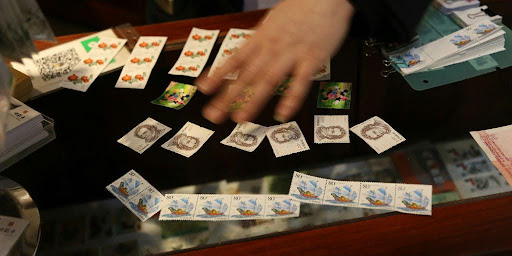
So, you’ve got this idea of hitting that big 800-to-1 payout. It’s exciting, no doubt about it. But before you go throwing money around, let’s talk about doing this smart. It’s not just about picking long shots; it’s about understanding the game and not letting the dream of a huge win lead you astray.
First off, only bet what you can truly afford to lose. This is the golden rule, and it applies even more when you’re looking at bets with such long odds. Think of that $10 as gone the moment you place the bet. If you win, fantastic. If you don’t, it shouldn’t impact your daily life or your ability to pay bills. It’s entertainment money, plain and simple.
When you’re looking for these kinds of odds, you’re often going to find them in less common markets. Think novelty bets – like predicting a specific, unlikely event in a sports game, or maybe a very specific outcome in politics or entertainment. Sometimes, you might find them in very niche sports or leagues where the bookmakers have less information, leading to wider odds. It’s not usually found in the main markets for big games.
Here’s a quick breakdown of how to approach it:
- Research, Research, Research: Even with long odds, there’s usually a reason. Try to understand why the odds are so high. Is it a genuine long shot, or is there a hidden factor the bookmakers might have missed? This is where you might find a bit of value, though it’s rare at 800-to-1.
- Understand the Probability: Use odds calculators to see what probability those 800-to-1 odds actually represent. It’s usually a very small percentage. Knowing this helps keep your expectations grounded.
- Consider Smaller, Related Bets: Sometimes, instead of one massive long-shot parlay, you might find better value in a series of smaller, more focused bets. Or, you could break down a big parlay into smaller ones (like a round-robin) so that if one leg fails, you don’t lose everything.
- Shop Around for Odds: Different bookmakers will offer different odds. Even a small difference can matter when you’re dealing with such extreme numbers. Always compare before you place your bet.
It’s easy to get caught up in the ‘what if.’ The allure of turning a small amount into a fortune is powerful. However, responsible betting means acknowledging the low probability of such an outcome and ensuring that the pursuit of that dream doesn’t lead to financial strain. Treat it as a lottery ticket – a small cost for a tiny chance at a big prize.
Think about it like this: you wouldn’t spend your rent money on lottery tickets, right? This is similar. It’s a bit of fun, a flutter on a very unlikely event. If you’re disciplined and treat it as such, you can enjoy the thrill without the worry.
Frequently Asked Questions
What does it mean if the odds are 800 to 1?
When I see odds listed as 800 to 1, it means that for every $1 I bet, I could potentially win $800 if my prediction is correct. So, if I were to place a $10 bet at these odds, and my chosen outcome happens, I would win $8,000. It’s a way of showing how unlikely an event is considered to be by the people setting the odds.
How can I figure out how much I might win with a bet?
To calculate potential winnings, I can use a betting odds calculator. I just need to input the amount I want to bet and the odds. For example, with 800-to-1 odds and a $10 bet, the calculator would show a potential win of $8,000. These tools also help me understand the chances of winning, which is called implied probability.
Where do I usually find odds like 800 to 1?
Odds this high, like 800 to 1, are not common for major events where the outcome is quite predictable. I’m more likely to find them in special betting markets, often called ‘novelty bets.’ These could be bets on very unusual occurrences, like predicting a specific, long-shot event in a political election or a highly unexpected outcome in a sports game.
Is betting $10 at 800-to-1 odds a good strategy?
Calling it a ‘strategy’ might be a stretch. It’s more like a gamble on a very unlikely event. While the potential payout is huge, the chances of winning are extremely slim. Responsible betting means understanding that these kinds of bets are for entertainment, and I shouldn’t rely on them for consistent wins. Managing my money carefully is key, so I only bet what I can afford to lose.
How do different odds formats work?
Odds can be shown in a few ways. ‘Fractional’ odds, like 800/1, are common in some places and show the profit versus the bet. ‘American’ odds might look like +8000, meaning I’d win $8,000 for every $100 bet. ‘Decimal’ odds, perhaps 801.00, show the total amount I’d get back, including my original bet. A calculator can easily switch between these, so I know exactly what I’m dealing with.
What is the ‘favorite-longshot bias’ in betting?
The favorite-longshot bias is a tendency people have. We often get more excited about the idea of a big win from a long shot, even if it’s very unlikely, than we do about smaller, more probable wins. It’s why bets like $10 at 800-to-1 odds can be appealing, even though statistically, they are very difficult to win. It’s a psychological effect that influences betting choices.
Daniel Chase is a seasoned casino analyst and iGaming writer with over 10 years of experience in the online gambling industry. He specializes in game strategy, casino odds, and player-focused reviews. Daniel is passionate about helping players make smarter decisions through transparency, real data, and honest insight.
